There's no precise algorithm for SEO promotion. Each specialist follows his own strategy. However, those newbies who don't have experience in SEO can get acquainted with my website promotion plan. I believe many SEO agencies use a similar one. Some sections are described very briefly, but you should study the plan thoroughly. So, where to start the promotion?
1. Niche analysisinfograp
Before launching any business, the very first thing any entrepreneur should do is the analysis of his competitors. To find top players in your niche, it’s even enough to type a few keywords into the search engine bar. Websites which appear in the top 10 of the SERP are the ones you need to follow.
Using SimilarWeb, you can find out about the amount of their traffic, its source, distribution and dynamics.
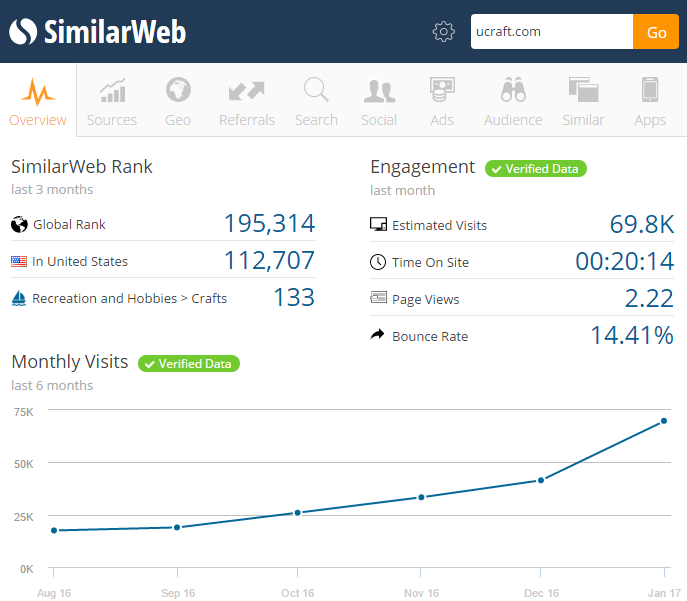
To conduct more detailed research, you have to use competitor research tools such as Serpstat. With its help, you can determine the keywords your competitor ranks for, find out which pages on his website are the most popular, what he mainly focuses on and so forth.
2. Focusing on a particular niche
Of course, you can enter any niche and try to promote yourself. For example, you can create an online electronics store with a broad range of products for every occasion, only to find yourself in the middle of the ocean, surrounded by sharks. Since this niche is too crowded and too broad, as is the target audience, it will be an incredibly hard job to bypass top players and get top rankings in the SERPs. And thus, get traffic = money.
A narrow niche is a totally different thing. For example, unique laptop bags worth minimum $1000. In that case, your target audience is greatly reduced. It’s easier to determine its age, sex, income class, the range of interests and other things related to the buyer persona description. In addition, it’s also easier to promote your business with the help of targeted keywords and content strategy.
3. Determining the semantic core
In fact, we do keyword research. Keywords are divided by the level of frequency:
- high-frequency (HF) keywords - consist of 1-2 words;
- medium frequency (MF) - include 2-4 words;
- low-frequency (LF) - usually such phrases are made up of 4-7 words.
To find the right keywords, it’s necessary to research your top competitors. You have to determine which keywords they use for promotion. This will allow you to take into account their successful experience and use it when developing your own site.
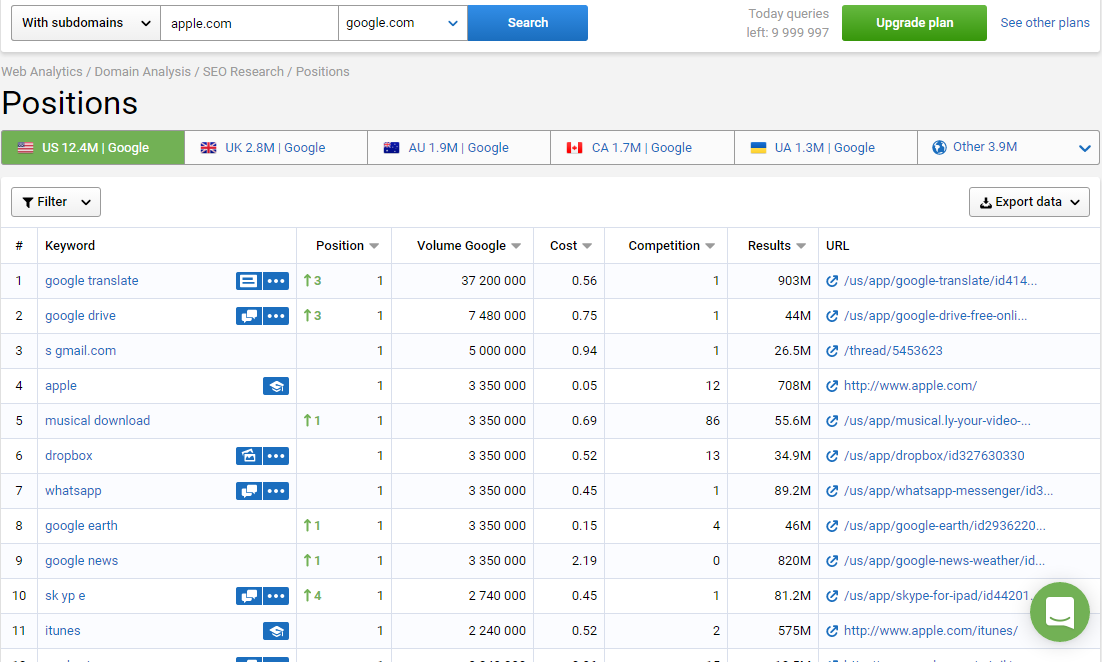
There are many tools that are perfectly suited to collect keywords, from the narrowly-specialized Keywordtool.io and Key-collector to all-in-one tools such as Moz and Serpstat.
The semantic core is a must if you don’t want to waste time but create a well-structured and well-optimized site that will bring you lots of organic traffic in no time.
4. Site audit
Once you get to know your competitors, you have to research your site in detail. For this, you have to carry out its audit. A site audit is quite an extensive task that requires time and attention. This step should be done by someone who already has some knowledge of SEO as well as experience in such audits. The site audit is needed to identify all of its advantages and disadvantages. Tools such as Serpstat or Raven Tools greatly simplify technical SEO.
With their help, you can get all the information on errors of your site in an easy, automatic way and see how well your site is optimized.
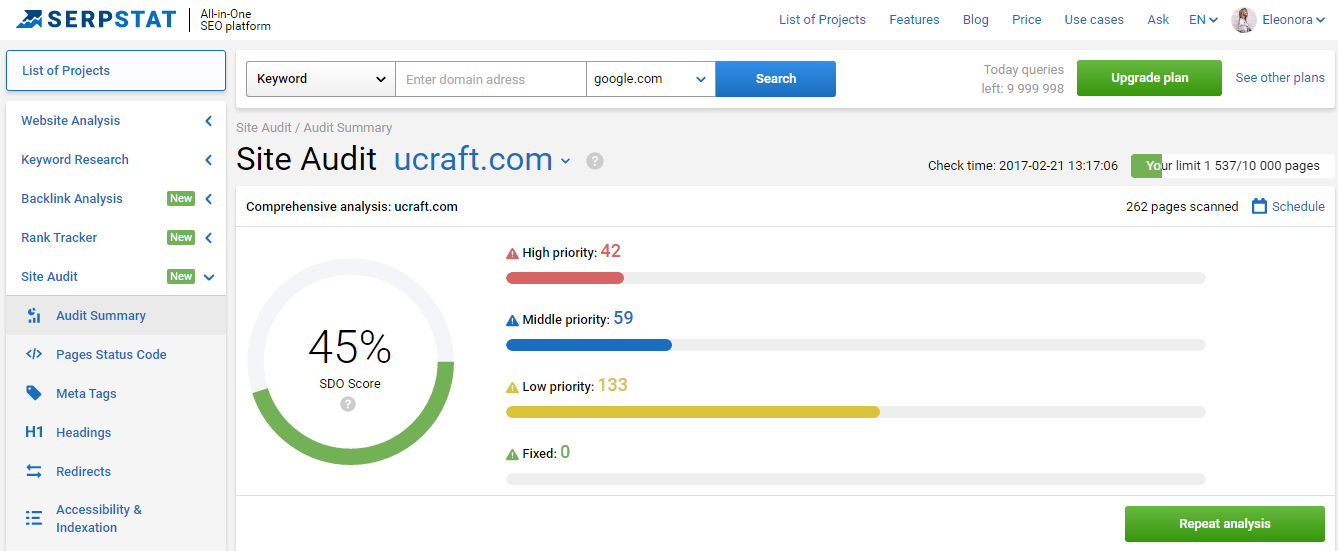
All errors are divided into categories. You can find their sources and conveniently download their full list to work on.
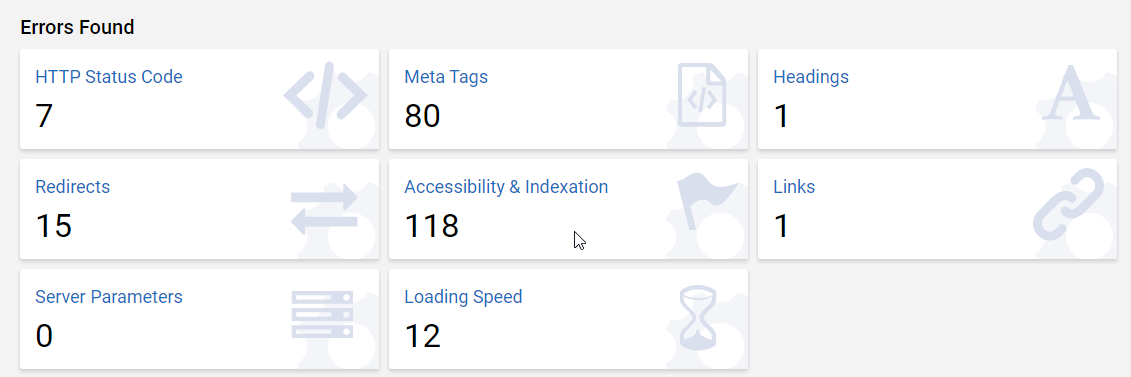
5. On-page SEO
On-page SEO is needed to improve website’s usability and make search engines ‘like’ it.
The structure
A perfectly optimized website has a clear structure and does not look like an RPG quest. :)
All pages must be divided into thematic groups. Every group should be easily reachable from the site menu, and each page must be accessible in no more than 3 clicks. If a website’s structure is complicated, it needs to include bread crumbs. This especially concerns online store owners. And don’t forget about the search bar! By the way, the search bar will not only help your users navigate your site but it will also allow you to find out what exactly they are searching for and are interested in.
The content
Successful websites contain fresh, useful and relevant content. These articles should be unique and at least 500 words in length. In addition, they are not overstuffed with keywords. Articles must have an easily readable structure, which means they need to contain paragraphs, subheadings, relevant images, etc. Don’t forget to do internal linking in order to make visitors stay as long as possible on your website.
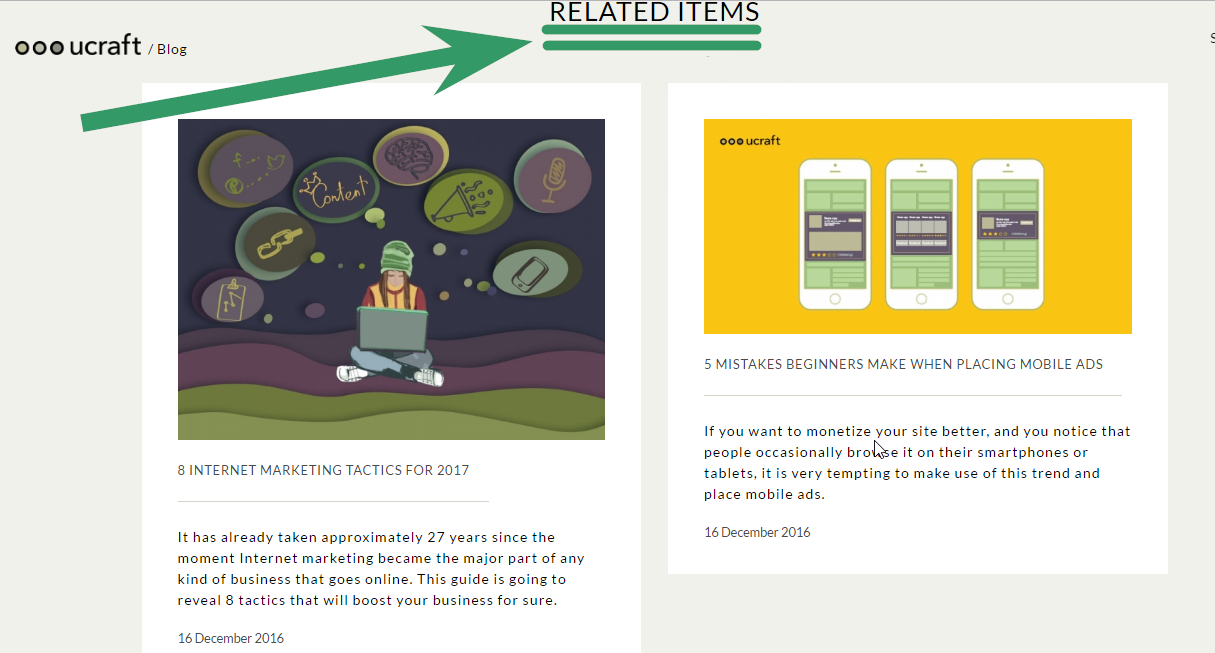
The code
There’s often much useless garbage in the code that you must check and clear. However, there are also some attributes every webmaster must include such as title and description tags and image alt texts. It’s also necessary to make sure that the mobile version of your site is recognized by search engines correctly. And whatever you do, don’t use flash navigation! It will prevent search engines from finding links to your site’s sections.
To check the accuracy of your site's structure, we recommend using Screaming Frog and Netpeak Spider.
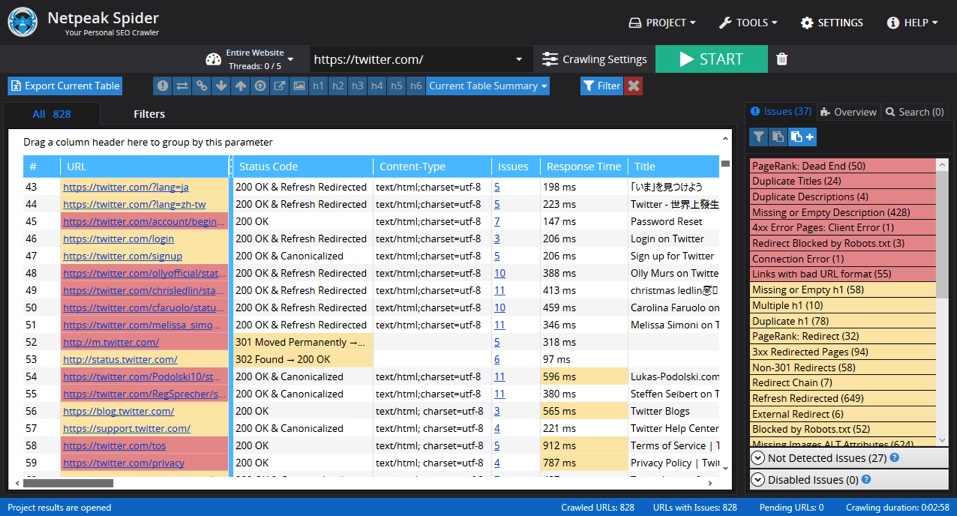
6. Off-page audit
Off-page SEO is also an integral part of website promotion.
Search engines count external links when determining rankings and popularity of the site in question. Building a backlink profile is a constant job. Don’t forget to run a competitor backlink analysis to find their backlink sources.
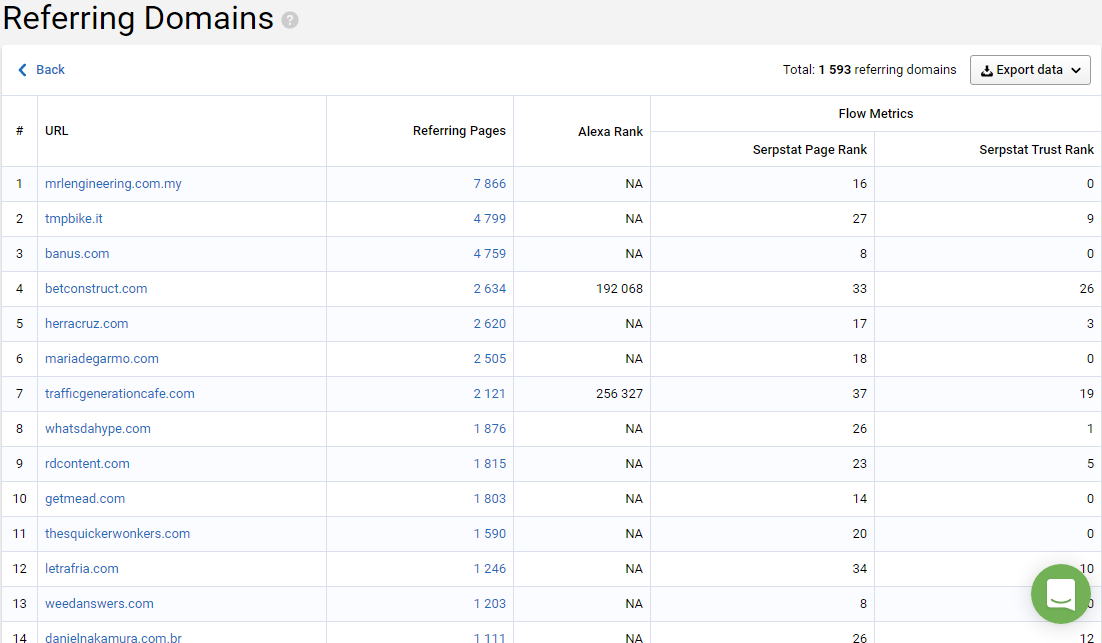
Surely, the best way to gain backlinks is to produce great content that’ll be shared many times on different web sources. But, there are also other options. For example, you can negotiate with websites and blog owners to let you publish your articles on their sources. There are also many blogs that are searching for guest writers, so you can register as an author and post your articles on a regular basis. Of course, these websites should be dedicated to your field of expertise. My personal favorite is Marketing Insider Group.
The bottom line
The aim of this article was not to talk about how to promote your site. It is impossible to explain everything even in a separate book due to the ever-growing number of approaches to SEO and website promotion. The aim of this article was to briefly acquaint the newcomers with the plan, which can be followed at the initial stage.
Do not forget your goals, relevant keywords, website audit and your competitors’ websites and make sure you build your backlink profile.
I hope you now know where to start your SEO journey!

